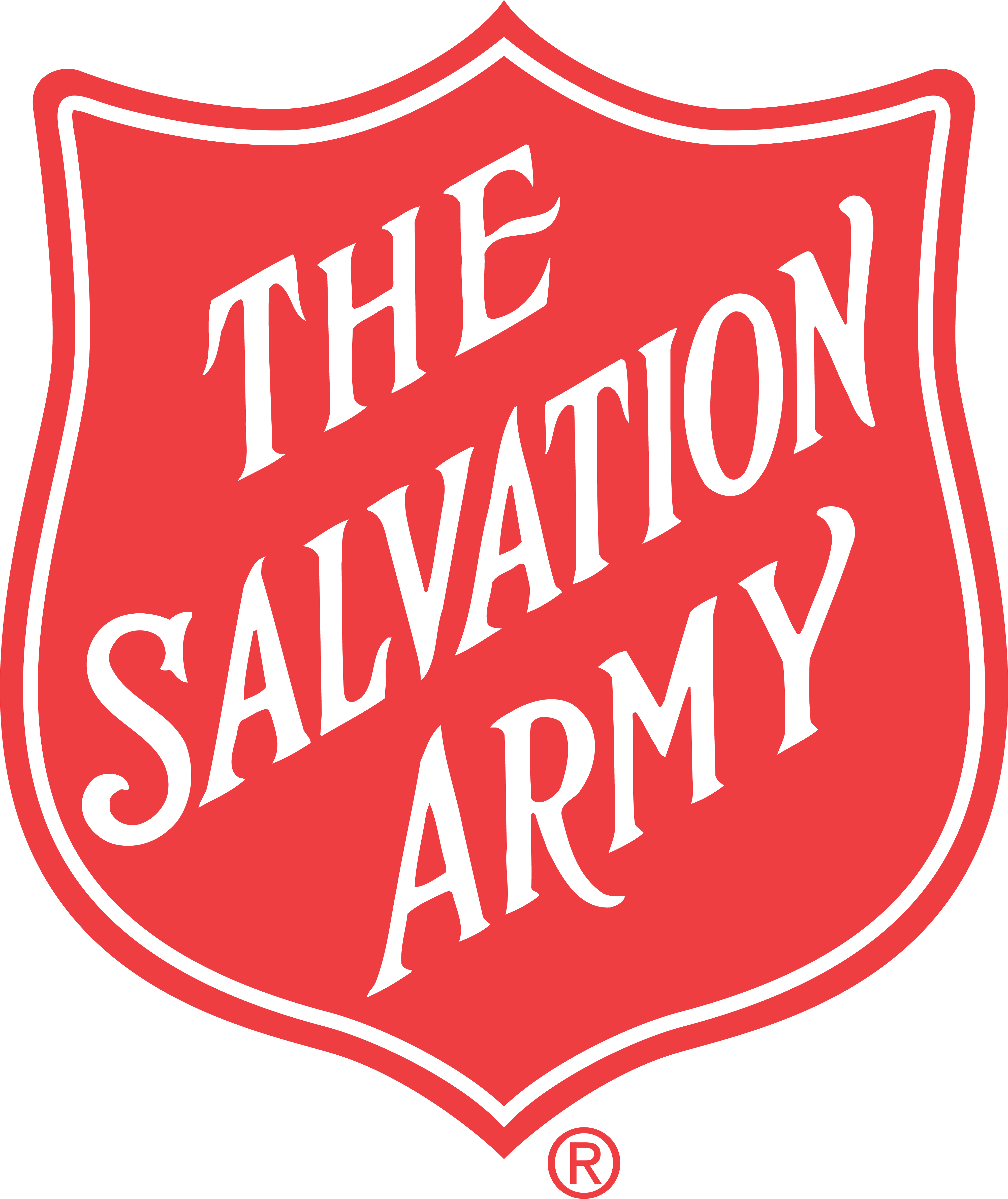Shedding LIGHT on Human Trafficking
by Hugo Bravo

The Salvation Army’s LIGHT Project reminds people caught up in human trafficking that recovery is not something they have to face alone.
One of The Salvation Army’s longest-fought battles has been against human trafficking—the buying, selling, and trading of people for labor or sexual exploitation. From efforts to increase the age of consent in England in 1885 to a campaign to free women who worked in early 20th-century Japanese brothels to today, countless Salvation Army officers, volunteers, and allies have taken on this ministry to help bring souls from darkness to light.
But removing men and women from their traffickers is only the first step. To truly bring someone from the darkness of human trafficking to the light of normalcy takes much more. People who have spent months or years being denied basic privileges or any sense of independence cannot be expected to walk into a state of self-sufficiency. Without support, advocacy, and understanding, it’s painfully common to see them return to their trafficker or a similar situation.
The LIGHT Project (Leading Individuals Gracefully out of Human Trafficking), The Salvation Army’s anti–human trafficking ministry based out of Pittsburgh, Pa., is making sure the light never goes out for survivors. Staff members use their connections, resources, and indomitable spirit to meet the needs of survivors of both labor and sexual trafficking.
“Individual case management,” says Tabitha Ceryak, director of the LIGHT Project, “is probably the biggest step toward [establishing] a human trafficking victim’s self-sufficiency. That’s when we can offer assistance and guidance that can impact lives immediately. Housing is important, but with case management, we can pay carpenter union dues for a man who was labor trafficked, so he can find legitimate work. We partner with local organizations so a family can receive mental health counseling. We find important documents for a sex trafficking survivor, so she can qualify for assistance from the city.”
Speaking up
“Something I’ve learned about labor trafficking is that many of the people are trafficked by others of their own race and background. That’s so sad and unfortunate to me. How can you put someone who’s struggling, just as you are, through something like this?” Ceryak says. Before joining the LIGHT Project, she was aware that sex trafficking happens in a city like Pittsburgh, but she wasn’t as familiar with its labor trafficking numbers.
“I thought it would be more in central Pennsylvania, where the farmlands are. But labor trafficking is found in laundromats, nail salons, and massage parlors, not just in fields,” Ceryak says. “I’ve become a lot more mindful of it myself. When my home needed a new roof, we hired a reputable contractor. But even so, I asked one of the workers if they were being paid properly by their supervisor. Thankfully, they all were.”
Labor trafficking can sometimes be difficult to spot. No customer goes into the kitchen of a favorite restaurant to ask about the staff’s legal status, for example. But there can be signs, especially when a worker has to go somewhere like a hospital.
“When they stay quiet and the ‘boss’ speaks for them, that’s a red flag,” Ceryak says. “Unfortunately, hospitals don’t always have the authority to report incidents like that, but if someone stays long-term, they can refer them to social services like ours.”
Human trafficking can ensnare people of any background.
“I’m a man. How could this happen to me?” Ceryak hears such words from many men who’ve been trafficked. But trafficking never discriminates, and its survivors can require representation and advocacy, even years later.
“We had a family from Honduras that had been labor trafficked and remained in contact with us,” says Bimala Gurung, a survivor support specialist with the LIGHT Project. “We learned that their child was seriously injured during gym class, and the school refused to pay his medical bills, even though they were liable because it had happened on school grounds. The family was afraid to speak up for themselves because they were in the process of getting their U.S. citizenship.”
Ceryak personally went to the school on the family’s behalf. “I thought about how many other families are in similar situations, without an advocate to support them. It made me so angry,” she says. “A school would never do that to an American family.” Eventually, the school agreed to pay for the child’s medical bills.
Lisa’s story
When she was just 16 years old, Lisa,* from Texas, befriended a man at an underage nightclub. Eventually, they began living together in hotels, where Lisa engaged in sex work under his orders.
“Lisa lost all contact with her parents, except when she became pregnant by her trafficker. He sent their baby to live with them,” says Ceryak, who worked closely with Lisa after the LIGHT Project took on her case. “It happened twice more after that. It was the only way that Lisa’s parents knew their daughter was still alive, when another baby showed up at their doorstep.”
Trying to escape her trafficker, Lisa, pregnant with her fourth child, left Texas and moved to Pittsburgh. The LIGHT Project connected with her while she was at the hospital.
“The trafficker had connections in Pennsylvania and followed her to Pittsburgh. He beat and assaulted her so badly that she had to be airlifted to get medical help,” says Ceryak. “The hospital kept Lisa from going into labor prematurely and treated her for her drug addiction. They could tell that she was a call girl by the heroin injections on her toes. That’s how sex traffickers force their victims to use needles and not leave marks or scars.”
The LIGHT Project helped Lisa with food and gift cards and found her an apartment close to the hospital, so she could continue treatment. In a matter of days, she shared her life story. Today, Lisa has reconnected with her parents and given birth to her fourth child, the first she’s been able to raise on her own.
“Traffickers know how to find people to go after. They can approach a college student working on her degree as easily as they can approach a parent while food shopping. It’s not very likely that a trafficker is going to throw their adult target in a van outside a store and drive off. Instead, they’ll pay them a compliment, befriend them, and gradually earn their trust,” says Elena Chapin, outreach coordinator for the LIGHT Project. “People mistake human trafficking as something that only happens overseas on vacations. That’s the Hollywood movie version of it. Someone can get quietly trafficked through the social media accounts on their phone, or on a child’s online video game voice chat. We’ve seen both of those things happen.”
A passion project
The LIGHT Project is not based out of a Salvation Army corps, but a holistic approach is available to those who seek it. Valarie Coleman, housing coordinator, says every client who’s come to her office has asked her if she believes in God.
“I tell them that I do, and I’m happy to speak with them about it,” says Coleman.
“Valarie is so good at that,” says Ceryak. “Our clients say that she offers help to them in a motherly way, different than what they’re used to.”
“I’m not a pastor,” says Coleman. “My job is to help people find a roof over their head. So in those discussions, I let them control that aspect of ministry, and what they want to share with me. But if they choose to walk down that street, I’m walking along with them.”
The LIGHT Project also works with The Salvation Army’s Emergency Disaster Services (EDS) of Western Pennsylvania. Every week, EDS goes to feed the unhoused community of Pittsburgh, and a project representative accompanies them to share information and meet the people looking for food.
“I remember the first time we went, within the first three minutes of working with EDS, we fed a woman who was being sex trafficked. Now, she’s moved on from that life and is living in an apartment,” says Ceryak. “I know that we were meant to be there that day for her.
“People might say, ‘They’re just prostitutes—they want to do this.’ But the truth is that the people we help didn’t wake up one day and decide they wanted to sell their body, or they wanted to work for someone and get paid next to nothing. Something happened to that person to force them into that line of work. It could be abuse, a way of survival, or something that no one could have ever imagined. Every time I think I’ve heard it all, a completely new experience gets shared with us.”
Working for a community outreach program can be frustrating. Sometimes it requires frequent reminders and calls to gather needed information. But the men and women who are helped by the LIGHT Project stay in touch, provide regular updates, and are open to new forms of assistance. They see a light at the end of the tunnel because they have a support system that walks through the darkness with them.
“None of us have ever worked for an agency like the LIGHT Project or under an organization like The Salvation Army before,” says Ceryak. “Western Pennsylvania has corps officers, volunteers, and employees who are passionate about what the LIGHT Project does. They know that fighting human trafficking and helping its victims cuts to the very core of The Salvation Army’s mission.”
*Name has been changed to protect her identity.

